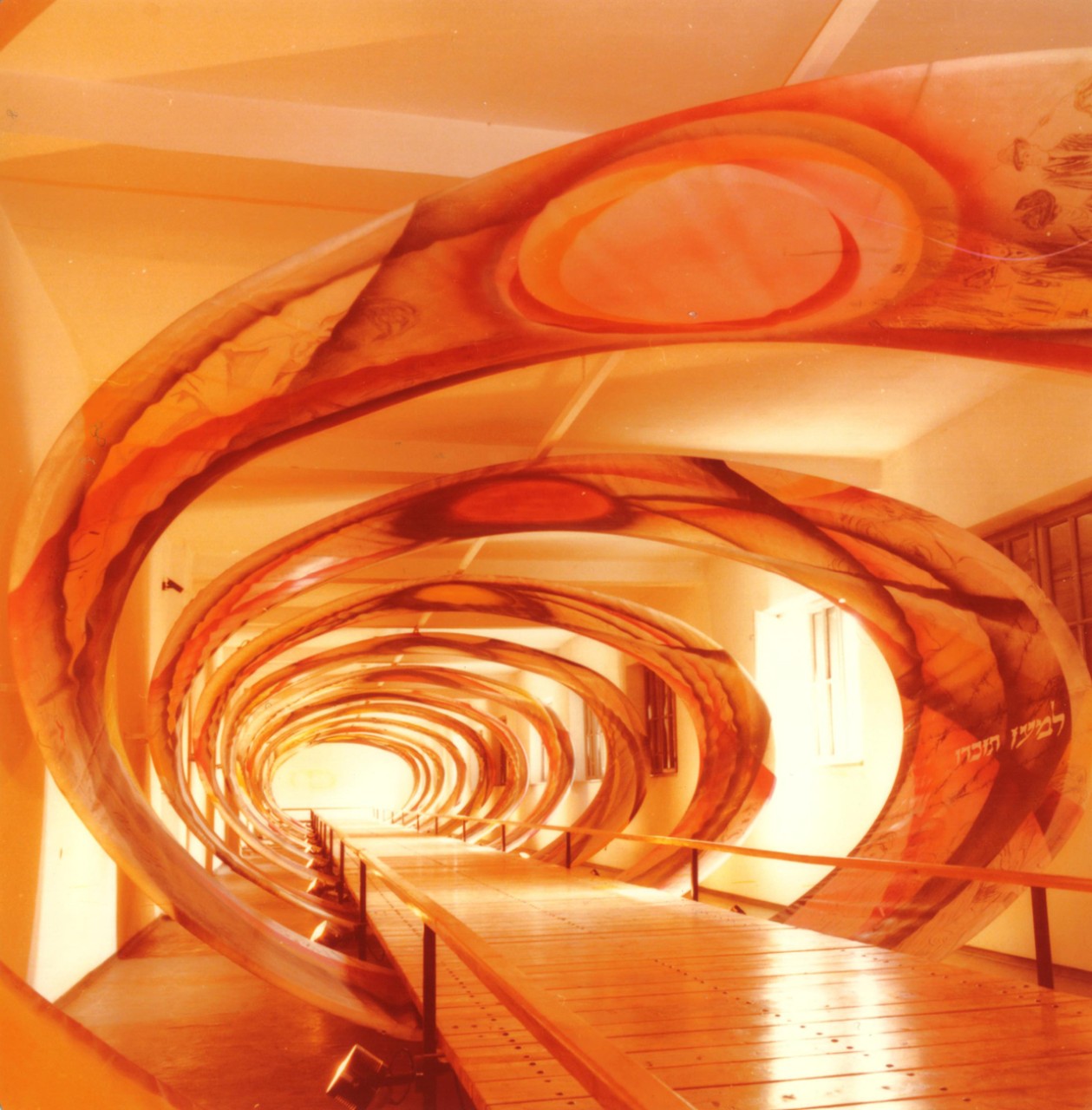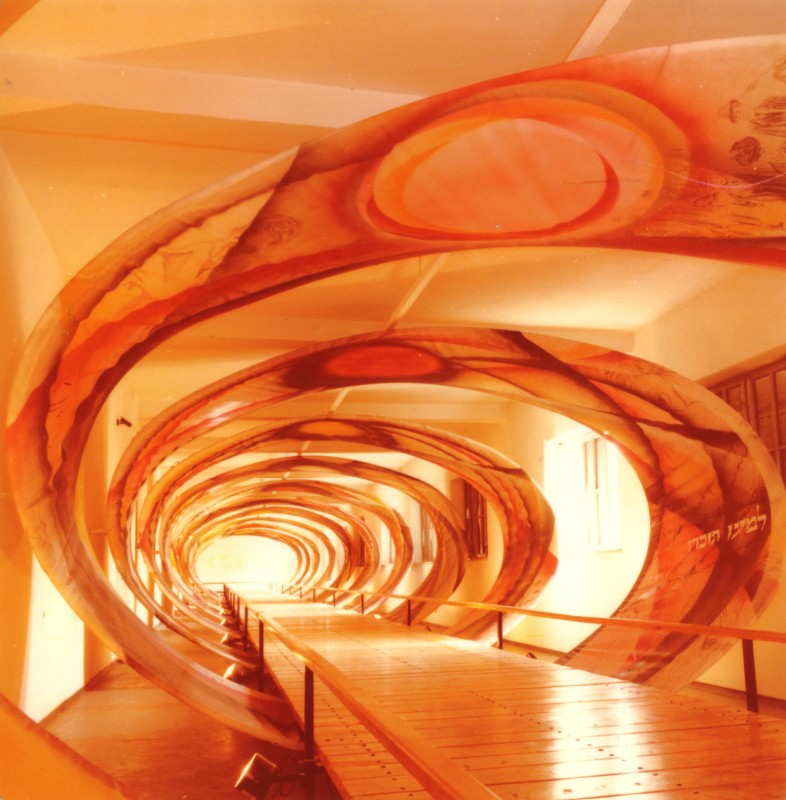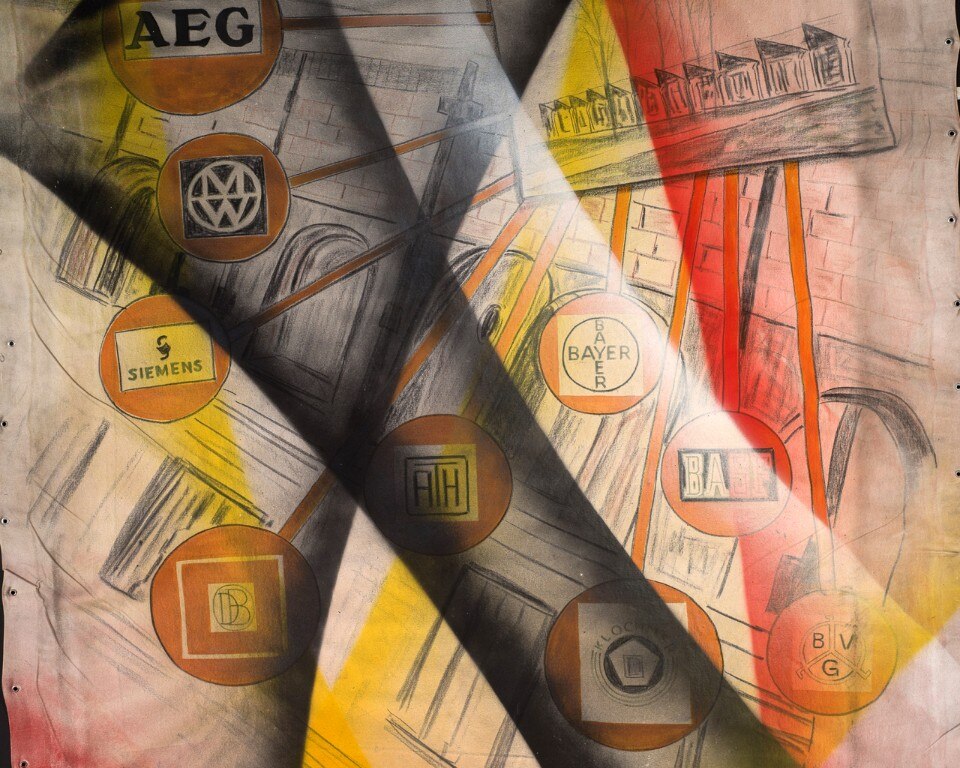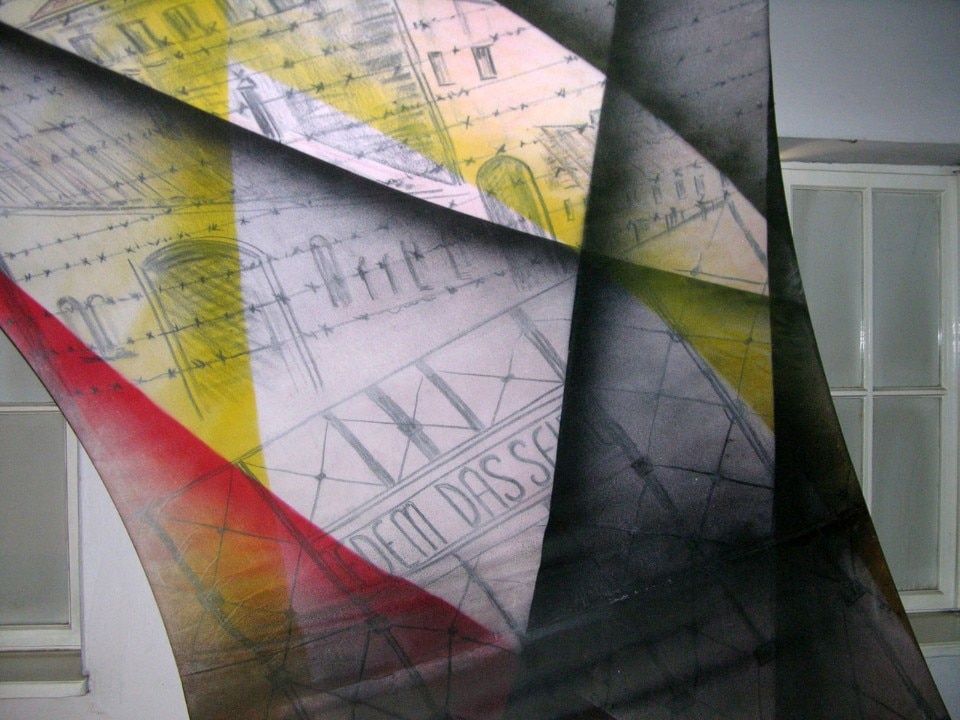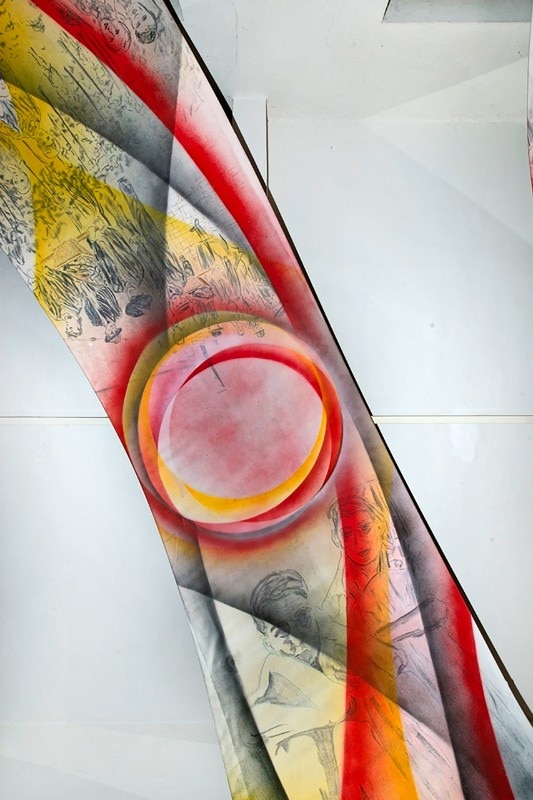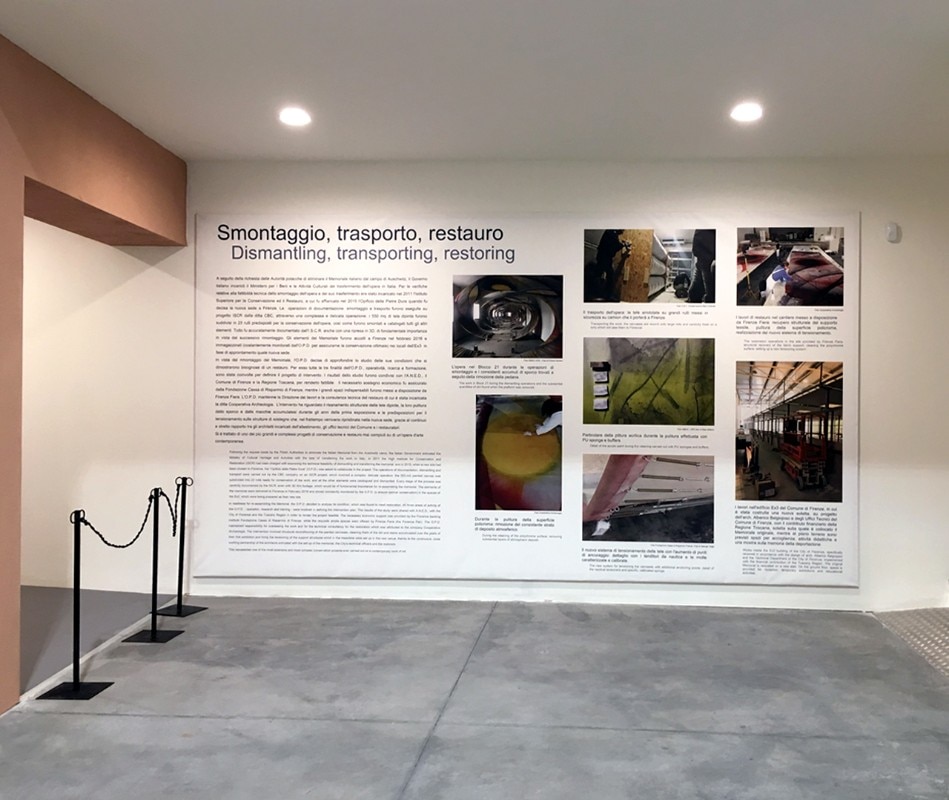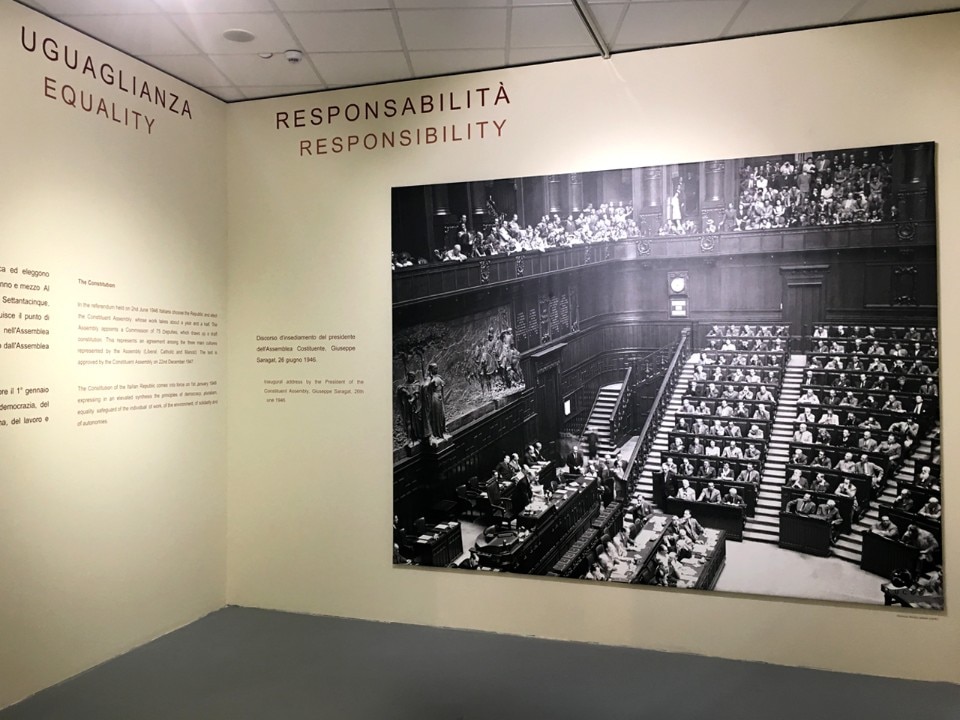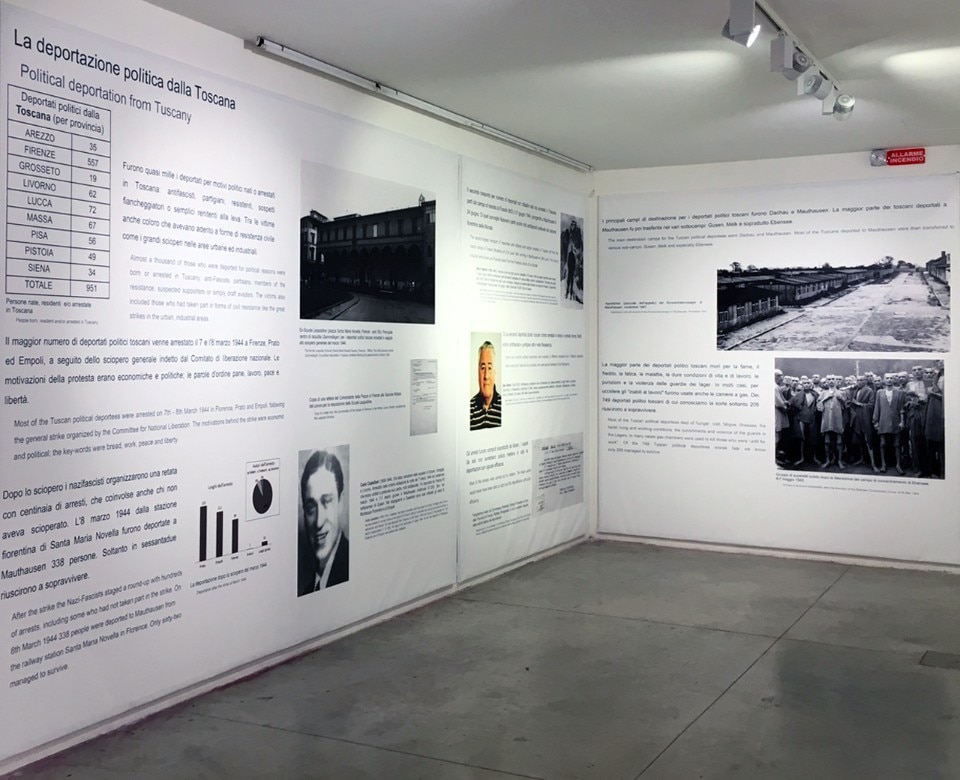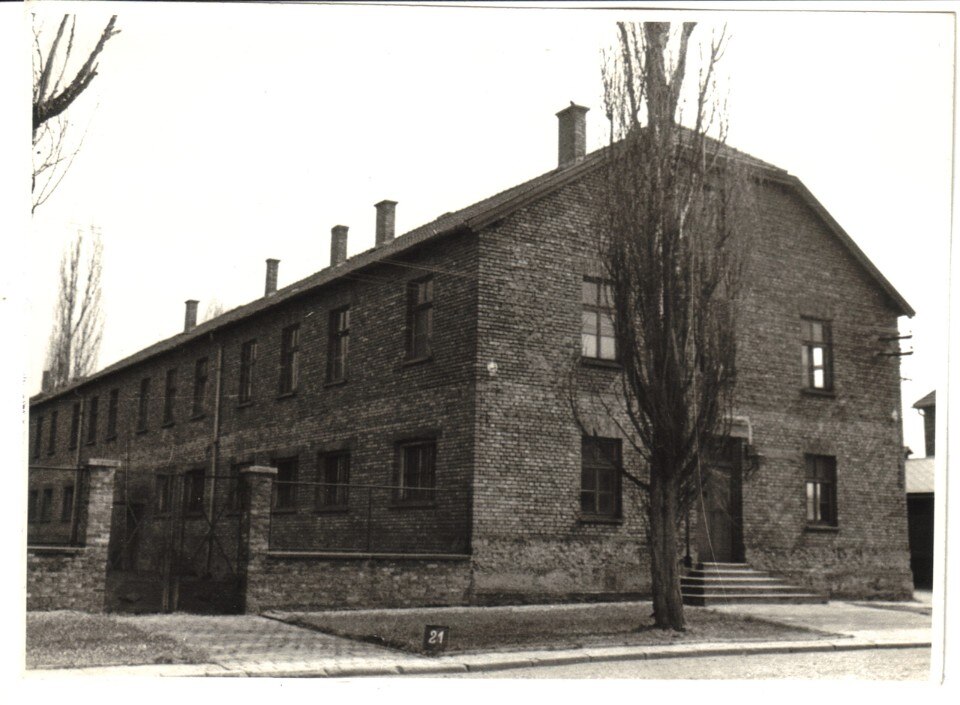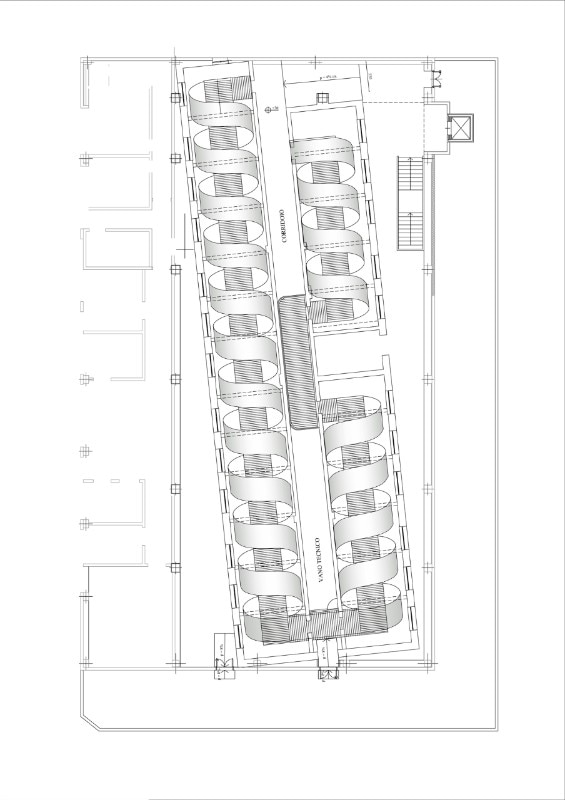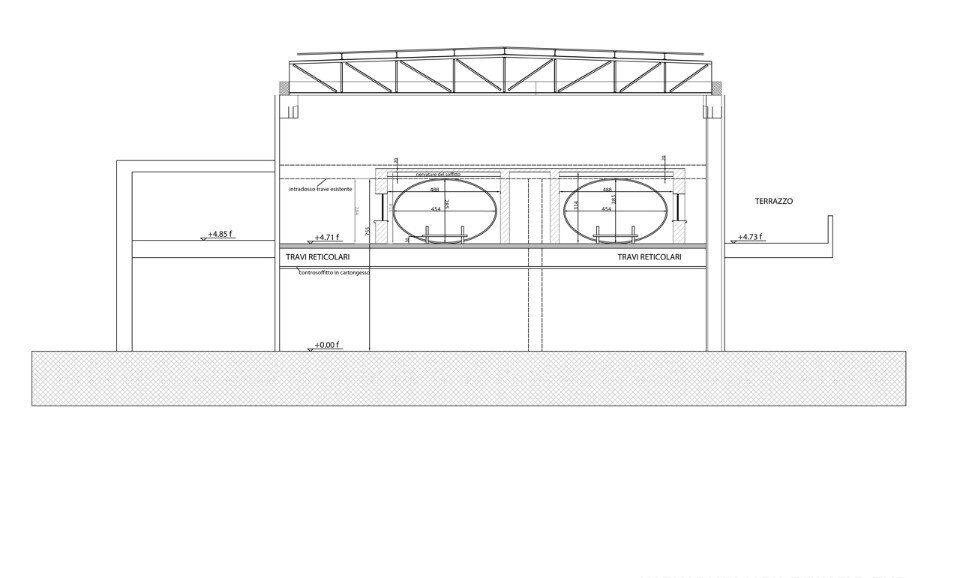In the general climate of intolerance that has been affecting several social contexts across Europe so far, memory is the first value to be threatened, to be often gradually and inescapably eroded, stone after stone, possibly in its less exposed structures, those that do not meet the eyes of everyday public debate. The story of the Memorial for Italian victims of Nazi extermination camps may somehow be one of this eroded stones; but it also represents a revenge for memory, because of its evolution: in the end, a story of reconnection of tighter links between memory and contemporary dimension.
Since 1980, Italy was represented in the Auschwitz camp museum by a Memorial located in Block 21. Not just a document, but a whole experience, the Memorial is an installation. A spiral developing inside a deportees’ dormitory, made of canvases illustrates the history and the protagonists of fascism, resistance and deportation, narrating the nightmare of time passing in the camp with no chance to know when it would end. The installation has been conceived and realized by Gianfranco Mari — then the president of National Ex-Deportees Association (ANED) — Primo Levi for methodological and historical curatorship, Lodovico Belogioso (BBPR studio) and Alberico Belgioioso for architectural design, Pupino Samonà for the paintings, with a general direction by Nelo Risi and music by Luigi Nono.
Sice 2008, the Polish government imposed new guidelines imposing that all installations should have a strictly pedagogic character, thus making the Italian memorial totally non-compliant, because of its “artistic” nature. In such a scenario, the installation has been closed to the public in 2011 and evicted in 2014, under the threat of removal and demolition. After a consulting process, the Regional Government of Tuscany and the City of Florence have proposed to host the installation in the Ex3 building in Gavinana: the operations of dismantling, transportation, restoration and reconstruction have involved the Italian Ministry for Cultural Heritage and the Florentine Opificio Pietre Dure. The Memorial has opened in its new location on May 8th this year. The general project has been curated by Alberico Belgiojoso: it locates the installation on the first floor, as in its original concept, and an introductory exhibition on the ground floor , articulated in two historical sections — prewar and postwar years — and a third section dedicated to the Memorial itself.
The new installation, as a consequence of an act of eviction, is undoubtedly carrying the signs of a painful story; still, an unprecedented aspect — crucially relevant for times Europe is going through — characterizes this process: a chance for a new scial sharing of memory.
As remarked by Alberico Belgiojoso, “The communication is clearly different when received in Florence, close to a shopping mall, instead of in Auschwitz, with the real deportees’ dormitory as a setting. Still, a positive aspect has been pointed out: Auschwitz can be reached only by a long and planned journey, by people who are already interested in getting there; here, the Memorial can reach a large number of people right in the middle of their daily routine, getting them closer to the knowledge of facts that they may have otherwise ignored.”
- Project:
- Memoriale dedicato agli italiani caduti nei campi di sterminio nazisti
- Place:
- Gavinana, Firenze
- Address:
- viale Donato Giannotti, 75, Firenze
- Original project by:
- Lodovico and Alberico Belgiojoso, Primo Levi, Luigi Nono, Nelo Risi, Pupino Samonà
- Restoration and relocation project:
- General project management: Alberico Belgiojoso (approved by ANED, Regione Toscana, Comune di Firenze) Construction project and management: Comune di Firenze, arch. Michele Mazzoni, ing. Francesca Benvenuti; Relocation and restoration process: Ministero dei Beni Culturali (MiBAC); Opificio Pie tre Dure di Firenze; CBC Conservazione Beni Culturali Soc. Coop. Roma, Cooperativa Archeologia; Exhibition construction: Kronos-Comunicazione e Creatività srl, Punto Metal di R. Bergamin


